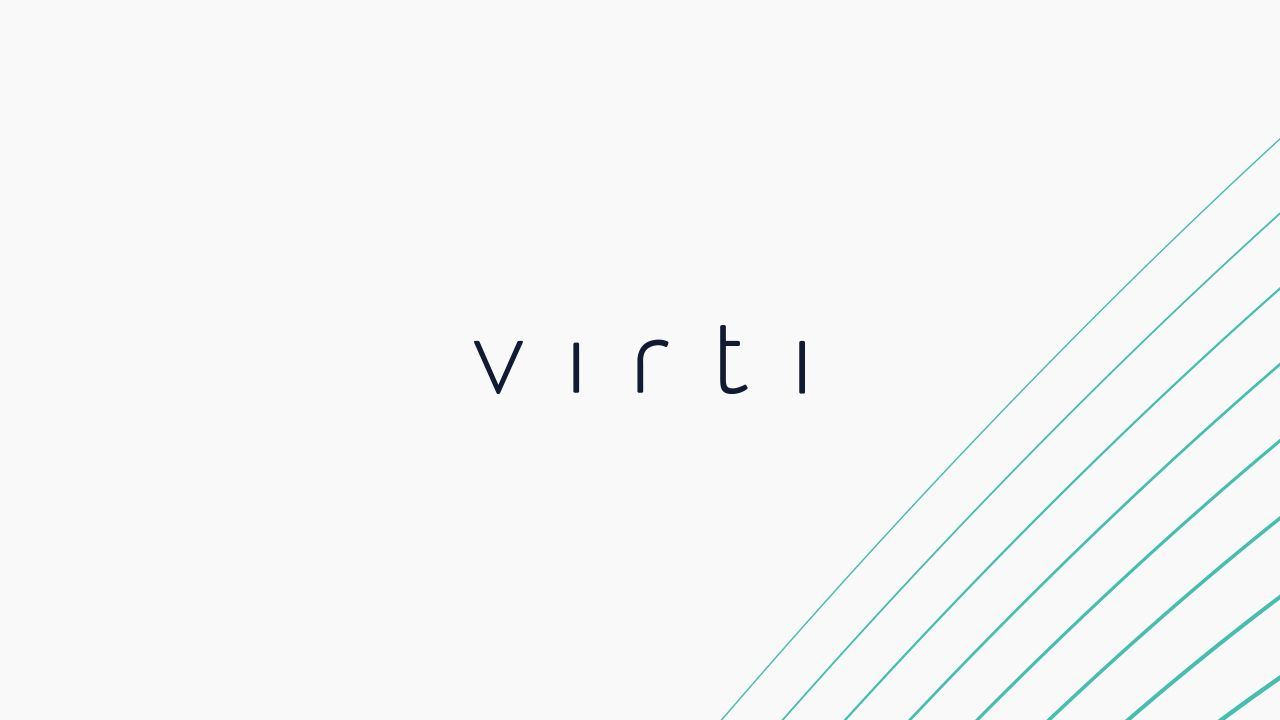How Technology will be Key to the Future of Learning & Development
People are always surprised when I tell them that Virti isn't a VR company. Instead, I tell them we are a learning company that uses technology to deliver the best learning possible. It's not the technology itself that matters, but what we do with it.

People are always surprised when I tell them that Virti isn't a VR company (or not an AI company, or not a Machine Learning company). Instead, I tell them we are a learning company that uses technology to deliver the best learning possible. Often, this includes VR, AI and Machine Learning, but other times it may involve using a 2D video and a feedback form or a 1-to-1 video-based coaching session. It's not the technology itself that matters, but what we do with it.
That said, it's hard not to be excited about recent advancements in the technology space and what impact they will have on learning. This post will cover some of these technologies and their impact, outlining how they will make learning ubiquitous and fractured.
It's not the technology itself that matters, but what we do with it.
Nils Hellberg, CTO
Always Present - Ubiquitous Learning

The move from desktop computers with dial-up connections to wireless devices such as mobile phones, laptops, and tablets has resulted in a massive shift in how we consume content and learn. If you don't know what I mean, try explaining to a 10-year old how you used to find a good restaurant in a city you never visited before, or how you sometimes had to walk over to someone's house to have a chat.
New technologies such as 5G will mean that mobile devices will have access to even faster speeds and more data than wired connections have today. Quicker and more reliable connections will have a tremendous impact on learning. Not only will this change when and where we have access to learning, but also what type of learning we have access to. We will be able to deliver richer content such as high definition video or fully immersive CGI environments on the go. More portable and light-weight VR and AR devices, such as the Vive Flow, and platform agnostic software also means that we'll be able to access fully immersive learning no matter where we are.
With the Internet of Things, it's not only our mobile devices that will connect to the Internet either. Any device will be able to send and receive data and network with each other. More data means we will be better able to track performance and behaviours and deliver just-in-time learning relevant and valuable to our current situation. Data will be available wherever, whenever.

Smaller and more powerful devices with better and faster Internet connections means learning will become ubiquitous. With on-demand access to learning content adapted to our evolving situations and exact needs, instead of training before we move into a new role, we will constantly be adapting and learning as we go.
Learning will shift towards becoming active rather than passive, with learners able to access any type of learning from any kind of device, at any time they need.

Better Customization - Fractured Learning
If learning is becoming ubiquitous and always available, how do we make sense of what to consume and when? With constant access and an ever-growing catalogue of available content, we will shift away from one-size-fits-all curriculums and towards a more customized and personalized learning approach. The content a learner consumes will be tailored to their unique preferences and circumstances, using a wealth of new technology to support the curation, presentation and delivery.

Artificial Intelligence and Machine Learning will play an essential part in these developments, with computers being able to parse and make sense of vast data sets and enable objective assessment instead of traditional approaches based on human bias and subjectivity.
Based on data, learners will be presented with training that makes sure they focus on upskilling where needed instead of wasting time on things they already know. Managers and teachers will be able to measure performance and behaviour at scale, matching core skills and behaviours to learning outcomes, and present them with clear action steps to improve.

Natural Language Processing technologies such as sentiment analysis, speech recognition, and voice assistants will enable a truly blended learning environment. Learners will be able to access and interact with content in ways that work best for themselves, and learning will be more accessible and inclusive.
With advances in biometrics and Computer Vision technologies, it will be possible to better measure traditionally hard to quantify soft skills behaviours, such as body language and empathy. We will integrate wearables such as fitness trackers into the learning experience to help assess performance as well as collect other vital data relating to physical well-being and mindfulness.
Learning will shift towards becoming fractured rather than standardized, with learners able to access content that is relevant to them, using the most suitable delivery.
Other technologies
While the technologies above are the main ones to impact learning in the near future, the general shift towards the Metaverse and more Game-Based Learning is also worth mentioning. In short, learning will become more collaborative, more social, and more fun, making it more effective. Other technologies, such as 3D printing and Smart Displays, will also enable us to move future learning away from the traditional screen and provide blended learning with more hands-on experiences, where not every type of learning has to be digital. Too much connectivity and a never-ending catalogue of content can sometimes be overwhelming and a bit much, and it's important to remember also to use technology to monitor well-being and encourage breaks. Using technology for the sake of technology itself is never the key; it's always about first setting our goals and then utilizing the best-suited technology to help us get there.

Virti is the only all-in-one platform that can optimise the entire remote learner's journey.
If you've read this far, you're clearly interested in how innovative new tech can change the way your employees interact with learning.
Our award-winning learning platform empowers organisations like yours to create digital learning experiences that feel like real life.


